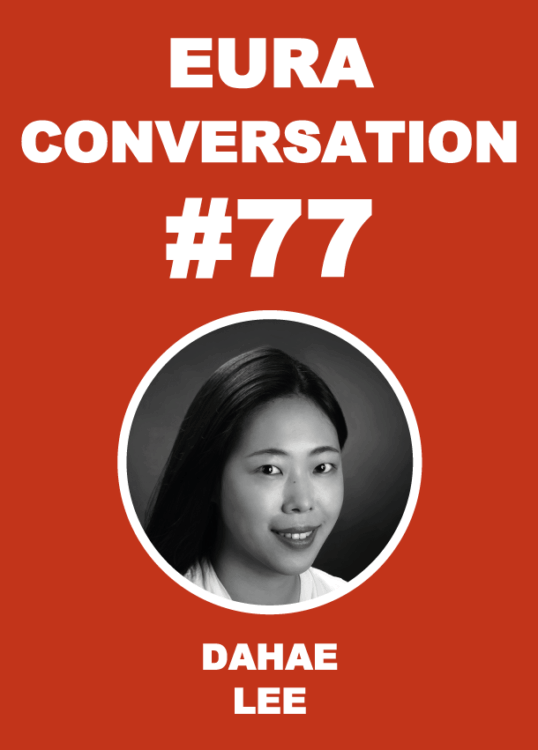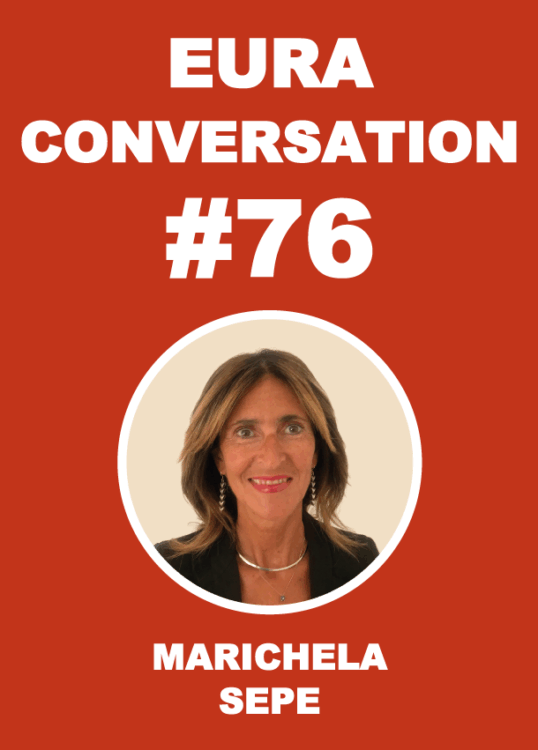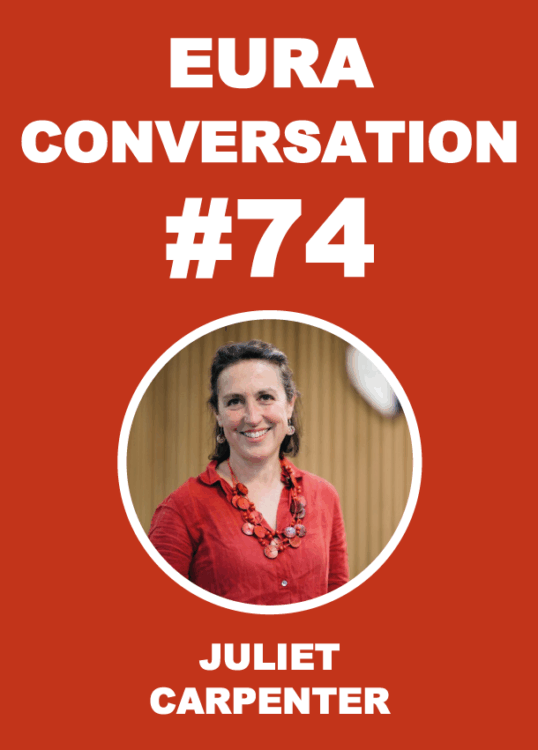
IAAC Scholarship Competition 2025-26
18/03/2025
#72 Creating healthy and sustainable cities
09/04/2025 On 15th March 2025 – it was a Saturday – 50,000 people quietly invaded Piazza del Popolo in Rome, a monumental square that has often witnessed key events within Italian political history. Called a ‘Square for Europe’, the gathering originated from the idea of Michele Serra, a columnist for a major national newspaper (La Repubblica), who claimed that a large mobilization of civil society was needed to contrast the repeated attacks, from different sides, on European values and identity. In his opening speech, Serra used a translation of the famous battle cry ‘Here we make Italy, or we die’ (‘Qui si fa l’Italia o si muore’), shouted by Giuseppe Garibaldi before a key battle during his successful campaign to unite the country in 1860, hence the title of this blogpost.
On 15th March 2025 – it was a Saturday – 50,000 people quietly invaded Piazza del Popolo in Rome, a monumental square that has often witnessed key events within Italian political history. Called a ‘Square for Europe’, the gathering originated from the idea of Michele Serra, a columnist for a major national newspaper (La Repubblica), who claimed that a large mobilization of civil society was needed to contrast the repeated attacks, from different sides, on European values and identity. In his opening speech, Serra used a translation of the famous battle cry ‘Here we make Italy, or we die’ (‘Qui si fa l’Italia o si muore’), shouted by Giuseppe Garibaldi before a key battle during his successful campaign to unite the country in 1860, hence the title of this blogpost.
In the preceding weeks the pressure on European countries had escalated in a way not seen since the end of the cold war. Vladimir Putin took advantage of the collapse of the Ukrainian army in some disputed regions threatening that the military attention would have been moved to the European boundaries in the case support of western countries to Ukraine would have not ceased. Donald Trump’s acolytes and closest collaborators have repeatedly attacked European values and politics, depicting the European Union as an institution created only to hold back American economic interests. They argue that the USA should leave the NATO alliance, thus deserting Europe to face Russian belligerence alone.
Italian national politicians initially expressed skepticism about the demonstration in Rome. Progressive and moderate parties, historically in favor of the European Union, feared that they could have been criticized for their lack of commitment in defense of the distinctive values that Europe encapsulates. Indeed, the event was implicitly conceived as a response by civil society to the weakness – if not the indifference – that politics was demonstrating to the attacks the European institutions were receiving.
Italian right-wing parties, as is common in a relation to a wide range of political questions (Vinci, 2025), acted out the usual ‘exercise of distinction’. On the one side, Forza Italia (the party led by Berlusconi’s political heirs) did not fail to argue the need to support Europe, underlining, at the same time, that the role of political leaders should be implementing concrete reforms instead of participating in symbolic events. A straight attack on the current EU institutions has come again from the Lega’s aggressive leader Matteo Salvini, who has never hidden his sympathy for Putin’s role within the international relations and has celebrated Trump’s win in the American election like no other leader in European politics.
This debate, within and among the political coalitions, ended up in a desolating parliamentary debate where the prime minister questioned the founding principles of a united Europe laid down in the ‘Ventotene Manifesto’, the political manifesto written by the EU’s ideological fathers – Altiero Spinelli, Ernesto Rossi, and Eugenio Colorni – when they were in jail under Fascism.
In contrast, a completely different response came from the mayors of Italian cities. The proposal to start acting in defense of Europe was immediately welcomed by the mayor of Rome, who had secured the place and logistics for the event, by the mayor of Naples, who also represented the national association of municipalities (ANCI), and by other leaders of coalitions ruling the largest Italian cities: Milan, Turin, Bologna, and Florence. A clear endorsement of the event came also from the mayors of Venice and Palermo who, unlike the previous ones just mentioned, are supported by right-wing parties, witnessing once again the red line that unites Italian cities on a wide a range of political matters.
There are several reasons why Italian cities have been so passionate in their defense of European values, reasons that go beyond the domestic perspective provided so far.
Cities are the places where the values and identities of Europe have historically been crafted, to the point that there could be no European Union without its urban areas. The distinctive character of European cities, however, is not simply about landscape and architecture. Their propensity to be the places where cultural and social innovations take place, shaping the civil rights for their wider national community, has made European cities a political force that cannot be separated from Europe as whole. It is not surprising to see such widespread resistance by municipal governments to the forces that threaten the common values that Europe has stood for since the end of the cold war.
Another reason to welcome cities’ activism in defense of EU institutions is much more practical. The first proposal circulated by the EU Commission to urgently implement a rearmament plan had assumed that the necessary funds could result from the shrinking of regional development funds. Subsequently, after receiving the protests of different parties within the EU parliament, President von der Leyen explained that sources from the Cohesion fund could have been redirected from regional development to defense projects only on a ‘voluntary basis’ for each country. Meant as a reassurance, this approach could result in an even worse scenario for the unity of the European Union.
Consider the Eastern European countries under the pressure of the Ukrainian conflict. Over the last twenty years, in some of the countries more directly threatened by Putin’s menacing behaviour (Latvia, Lithuania, Poland), Cohesion policy has resulted in a unique opportunity to modernize cities and stimulate sustainable development within urban areas. Structural funds have guaranteed the construction of modern mobility infrastructures, the creation of new facilities to increase citizens’ welfare, and the regeneration of deprived neighborhoods, just to mention a few (Vinci, 2021).
In other countries like Hungary, Romania and Bulgaria, successful investments in urban development are unfortunately leading to an increase in polarization at the expense of rural areas, a process that can be balanced only if additional regional policies can be implemented in the coming programming cycles. Moving resources from territorial cohesion to the military sector, because of the pressure deriving from the Russian aggression, might have the effect of rapidly dissipating the social and economic progress made so far. Social and territorial disruption, in these and other countries, is exactly what reactionary and anti-European groups would like to see happening, in order to proliferate (Rodríguez-Pose, 2020).
Dismantling the European institutions is a long-desired wish of the international far right. For a long time, however, the EU has found in cities a mirror of its core values, while innovation taking place within urban areas has constantly reshaped European identity. The public gathering in Rome suggests that cities can, once again, be at the forefront of today’s battles: Keep European cities and keep Europe, or we die…
References:
Rodríguez-Pose A. (2020), “The rise of populism and the revenge of the places that don’t matter”, LSE Public Policy Review, 1(1).
Vinci I. (2021), “Cities and regional disparities in the European Union: evolving geographies and challenges for Cohesion Policy”, Urban Research and Practice, 14(4), 350-371.
Vinci I. (2025, in preparation), “Right-wings and the city in contemporary Italy: culture, policies, and remedy”, in Lackowska M., Aksztejn W., Nguyen Long L.A., Tosics I. (Eds), Cities Against Democratic Backsliding. Evidence from Europe and Beyond, Bristol University Press, Bristol.






